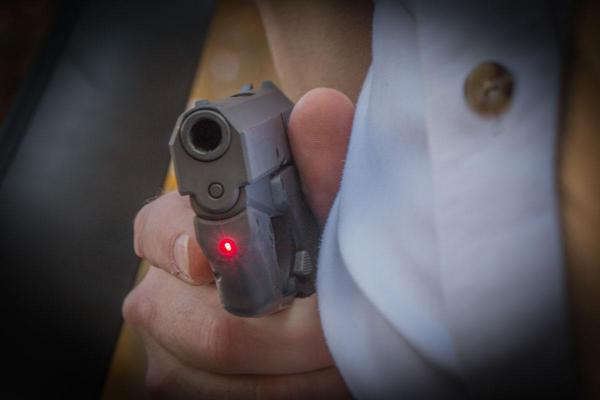Use one of these two techniques to dial in the laser on your handgun
Laser sights on defensive handguns remain popular.
Though they are one of the best-selling accessories for defensive handguns, because of the life-saving advantage they offer, some even consider them a necessity.
The primary benefit of a laser sight on a defensive handgun is that it allows the shooter to focus on a single plane.
Just as with the mini-reflex sights that are becoming so popular on defensive handguns, with a laser sight you do not need to try to make your eyes see the target, the front sight, and the rear sight, all at the same time.
You focus on the threat and that’s where you also see the laser’s dot.
Laser Pros and Cons
Of course, laser sights are not perfect. They’re battery powered, so they can fail. Also, in some instances of intense light, they can be hard to see on the target.
Where laser’s really shine – pardon the pun – is in moderate to low light situations. However, for a laser on a defensive handgun to work, just like with an optical sight it must be properly zeroed.
While this might seem like a simple enough task, because of offset, there are some things to consider.


From the standpoint of sighting in, a laser sight on a defensive handgun is no different than a scope on a rifle or a reflex sight on a handgun.
Since it is above, below, or in some cases even off to the side of the barrel, you must select a single distance where the laser sight will perfectly coincide with the point of impact.
Generally, for self-defense applications, this distance is best set at between five and 15 yards. But there’s a catch.
Since the laser might be mounted as much as an inch away from the barrel, if you zero at five yards, the point of impact/point of aim discrepancy will be an inch off at 10 yards.
Two Zeroing Methods
The most common technique for zeroing a laser on a defensive handgun is to adjust it so that the dot appears directly on top of the front sight at about seven to 10 yards.
This is easy to do and can even be done without shooting.
Just establish a good sight picture at seven or 10 yards and then adjust the laser until the dot is sitting right on top of the front sight, while you have that good sight picture.
The other laser zeroing method is known as the parallel method. With this technique you duplicate the offset of the laser on the gun, on the target.
In other words, like in the case of a laser grip, if the laser emits its beam from a location that is an inch below and an inch to the right of the barrel, you zero it so that, on target, your bullet will strike an inch to the left and an inch above where the laser is pointing.
The advantage to this zeroing method is that at any reasonable defensive handgun distance, the point of impact and point of aim difference will always be the same.
Close Enough Is Good Enough
For defensive handguns purposes, a variation of an inch is not a big deal. What’s more important is that you can see the laser on the target as soon as possible.
You do not want to have to look for the laser.
Ideally, when you point a handgun at a target or a threat, the laser would appear just above your front sight, if the sights are properly aligned on the target.
The only way to accomplish this is with front sight zeroing method.
The plus side to zeroing a laser in this manner is that you do not have to change anything regarding your presentation of the handgun.
You simply draw to your sights just as if your handgun did not have a laser on it.
This way, if the laser – for whatever reason – is not working, you’re looking for your sights just as you always have.
If the laser does not appear on the target, simply engage the target with the sights.
More than likely as you reach extension with your handgun, you’ll see that bright red or green dot right there just above your front sight.
Summary
This all might seem like an overcomplication of the use of a laser on a defensive handgun.
After all, one of the advantages of the laser is that you don’t have to look at your sights, and that you can even shoot from unconventional positions where you cannot get the gun up between your eyes and the target.
However, if you do not train to draw your handgun so that you can see your sights, where will you be when your laser decides not to work or if the lighting conditions are such that you cannot see it?
